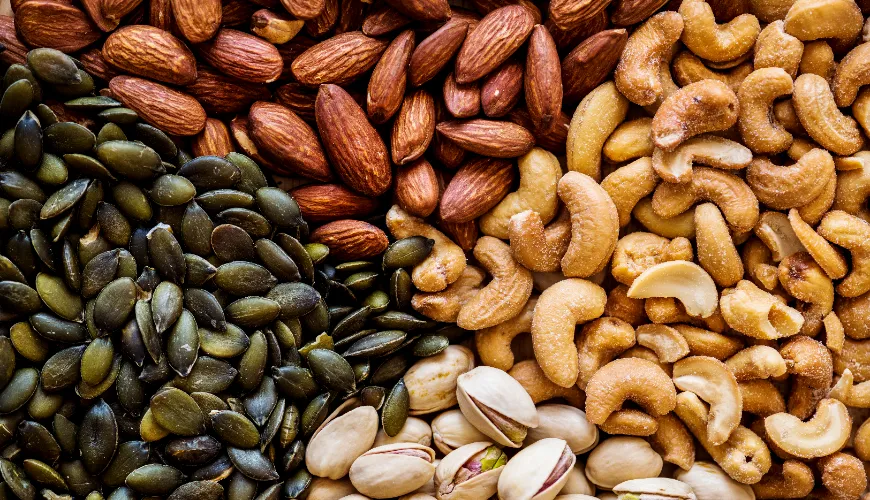
How to Create a Gastric Diet Menu That Won't Be Boring

How to Follow a Stomach-Friendly Diet - A Meal Plan That Pleases Both the Stomach and Taste Buds
Everyone has experienced it at some point – unpleasant burning, pressure in the stomach, a feeling of heaviness, or even sharp pain in the stomach area. Sometimes it's caused by stress, other times by poor diet or conditions like gastritis, peptic ulcers, or reflux. That's when a dietary adjustment comes into play. A stomach-friendly diet, often referred to as a bland diet, is key to relieving digestion and giving the stomach a chance to regenerate.
You might imagine a bland, flavorless diet with this term. But the reality can be entirely different. A properly composed meal plan for a stomach-friendly diet can be not only healing but also tasty. How to achieve this?
When is a Stomach-Friendly Diet Necessary?
A stomach-friendly diet is recommended for a range of issues, such as stomach inflammations (gastritis), stomach or duodenal ulcers, irritable bowel syndrome, gastroesophageal reflux disease (GERD), and also for recovery after abdominal surgeries or when the digestive system is generally weakened.
Prevention also plays a crucial role. People who are under long-term stress, eat irregularly, and frequently consume coffee, alcohol, or heavy fried foods may find their stomachs on edge. And that's when a meal plan for a stomach-friendly diet can be a very beneficial step, even if the issues are not yet severe.
What the Stomach Appreciates and What Unnecessarily Burdens It
A stomach-friendly diet is based on simple principles: light, low-fat, and non-irritating foods that are easily digestible. It avoids foods that can irritate the stomach lining while favoring those that are gentle, neutral, and naturally soothing.
When you need to be gentle on your stomach, opt for foods that won't burden it much – like stale white bread, boiled rice, potatoes, or pasta without fat. Lean meats like chicken or turkey, ideally boiled or steamed, as well as light soups without strong broth, are suitable. For vegetables, choose cooked carrots, pumpkin, zucchini, or potatoes. From sweets, grated or baked apples, bananas, rusks, sponge cakes, or dry biscuits are safe choices. When it comes to dairy products, select low-fat options – such as plain yogurt or cottage cheese.
On the contrary, it's definitely better to avoid or at least significantly limit foods that tend to irritate the stomach and can cause heartburn, bloating, or other discomforts. Such dietary mistakes include fresh yeast bread – due to the yeast content, it can cause unpleasant sensations. Similarly, whole-grain products with hard fiber, though generally healthy, can be a bit challenging to digest, especially if someone has a sensitive stomach.
The risky group also includes fried and fatty foods – like fries, schnitzels, or heavy sauces, which, although tempting in taste, do not make the stomach happy. It's also wise to be cautious with spicy and hot foods, especially if you don't have an iron stomach – chili peppers or strongly flavored dishes are not exactly ideal companions for the digestive tract. And now a little from the beverage section – coffee, alcohol, or various carbonated soft drinks can be downright harmful to digestion and often only worsen the condition. Similarly, chocolate, fatty desserts, or creamy cakes can act like a bomb to digestion.
We must not forget about certain types of vegetables, such as onions, garlic, cabbage, or legumes, which often belong to a healthy diet but are among the first suspects when the stomach acts up. Finally, acidic fruits – mainly citrus fruits or pineapple – can cause burning or irritation if the lining is sensitive. So if you want to give your digestion a little relief, it's worth avoiding these foods, at least temporarily.
The method of food preparation is also very important – ideal methods include boiling in water, steaming, or baking without fat. Frying and grilling are off-limits on a stomach-friendly diet.
Sample Meal Plan for a Stomach-Friendly Diet
When composing a meal plan, it's important to focus on regularity – ideally eating 5 to 6 smaller meals a day. Each should be light but nutritious. The food should be warm, fresh, and consumed in a calm environment. Skipping meals and "gulping down" food on the go is not recommended.
Here's an example of what a gentle meal plan for stomach issues might look like:
Monday
- Breakfast: Yesterday's roll with low-fat cottage cheese, weak chamomile tea
- Snack: Banana
- Lunch: Mashed potatoes with steamed chicken and carrots
- Snack: Plain yogurt without sugar
- Dinner: Rice with zucchini puree and boiled egg
Such a meal plan can, of course, be varied – for instance, adding soups like pumpkin or carrot cream, baked apples with a bit of honey, or homemade pudding made from plant-based milk. It always holds true that less is sometimes more – a calm stomach appreciates simplicity.
Impact of a Stomach-Friendly Diet on Health
A stomach-friendly diet not only has a therapeutic effect on an irritated stomach but can also lead to overall better digestion. Many people who have switched to a gentler diet report relief not only from stomach pain but also from bloating, heartburn, or fatigue after eating.
At first glance, it may seem restrictive, but in practice, it shows that life without fried schnitzel or spicy goulash can be not only healthier but also more pleasant. And if someone craves something special, there are alternatives – like baked zucchini cakes instead of potato pancakes, or sugar-free rice pudding as a sweet treat.
How Long Does a Stomach-Friendly Diet Last?
This is very individual. Some people follow it for just a few days during short-term issues, while others may need it for weeks, months, or in a modified form, for a lifetime. It's important to monitor your body's signals. If the pain returns or doesn't go away, consulting a doctor is always necessary.
Interestingly, some principles of a stomach-friendly diet overlap with traditional health recommendations across cultures. For example, in Japanese cuisine, light fish broths, boiled vegetables, and rice as a meal base are common – very similar principles to those recommended by modern gastroenterology.
Small Changes, Big Difference
The story of Mrs. Alena, a fifty-year-old librarian from Plzeň, is an example of how even small dietary changes can have a huge impact. "After years of work stress and irregular meals, I had to switch to a stomach-friendly diet due to severe gastritis. At first, I was desperate, but gradually I discovered that even simple food can be tasty. I learned to cook gentle vegetable soups, replaced coffee with herbal tea, and started eating regularly. The result was not only a calmer stomach but also a better mood and more energy," she says.
A stomach-friendly diet thus doesn't have to be just a temporary solution but can become a new healthy lifestyle that will suit not only the stomach but also the heart – literally.
Beware of Hidden Risk Foods
When choosing foods, it's important to read labels. Even products that seem harmless can contain artificial sweeteners, preservatives, or hidden fats, which can irritate the stomach. For example, some "light" yogurts contain more chemicals than the regular version. It's ideal to choose products with minimal additives – for instance, yogurt with just one ingredient: milk.
Foods from organic farming, which do not contain pesticide residues or artificial additives, have also proven very effective. Sausages and industrial foods should be more in the "occasionally, if at all" category when on a stomach-friendly diet.
A Meal Plan Tailored to Needs
There is no one-size-fits-all stomach-friendly diet meal plan that suits everyone. Each person is different and reacts differently. Some can tolerate cooked vegetables, others are bothered by even a pinch of pepper. The key is to listen to your body and gradually experiment with what suits it. Keeping a diary where you record what you ate and how you felt afterward is helpful.
In the long term, it is recommended to transition to a balanced, moderate, and naturally varied diet, which is not only dietary but primarily sustainable. Here lies the opportunity to combine the stomach-friendly diet with the principles of ecological nutrition – more plant-based ingredients, less chemistry, gentle preparation. This not only helps the digestive tract but also the planet.
Whether it's a short-term issue or a long-term need, a stomach-friendly diet doesn't have to mean the end of gourmet experiences. On the contrary – it can be the beginning of a journey towards greater lightness, gratitude, and joy in eating.

